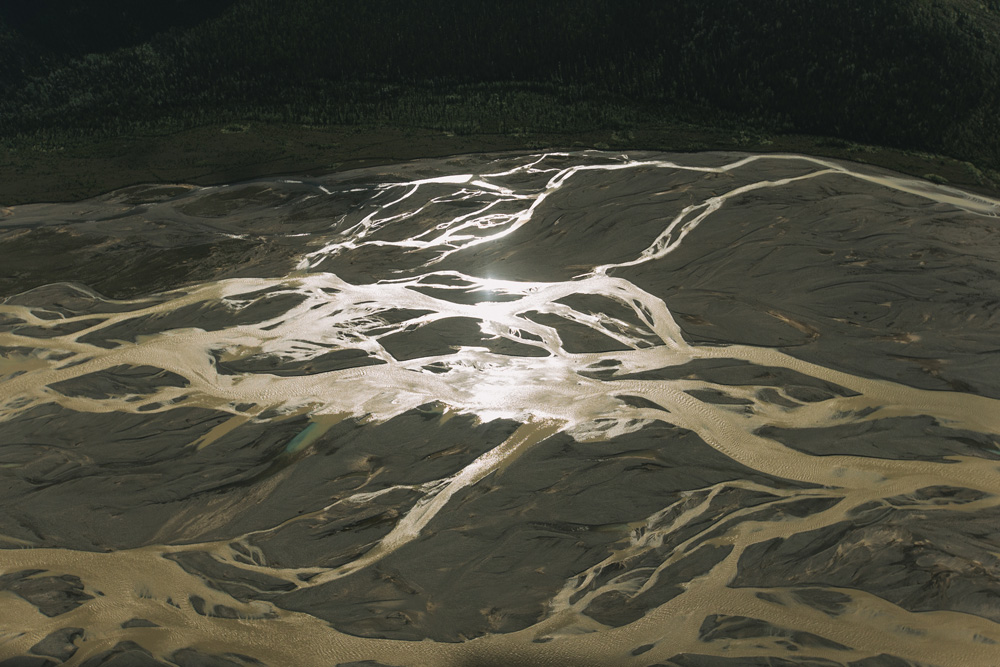
Photo by: Carson Brown
I’d been on some big water in an inflatable boat before, so when I was filling out my packrafting prep questionnaire for Kennicott Wilderness Guides in the days prior to a weeklong trip through the Wrangell-St. Elias National Park and Preserve in Alaska, I felt confident. “Class IV and V in Uganda, Class IV in Costa Rica and Colorado, sea kayaking in Washington…” I wrote down for my previous experience. I figured, how tough could this water be? I’d never been in a packraft before, but the point was to get from points A to B—not to survive a wild ride on the whitewater in the name of a adrenaline-infused vacation activity. So I thought, “This is going to be mellow.” That thought turned out to be an unknown sandbag, hedging what turned out to be one of the most gloriously wild and tremendously expansive trips in the backcountry I could imagine—one that redefined my boundaries of what “wilderness” means.
That sounds flowery and poetic now, but I didn’t step on a plane to Anchorage and then drive eight hours to the dead end of a dirt road in McCarthy, Alaska to “redefine” anything. I came to test shoes. Chacos, specifically. In anticipation of the launch of their new technical water and hiking shoes, the Odyssey and the Torrent Pro, Chaco had invited a handful of gear testers and journalists to put the new designs through the paces.
On the itinerary: Getting dropped by a bush plane three ridgelines-deep in the Wrangell-St. Elias Preserve at the Nizina Glacier, paddling 40 miles on the Nizina River from its origin back to the National Park boundaries, and navigating our way back to civilization—which was defined as McCarthy, a resuscitated ghost town that is home to Basil the dog, the Potato restaurant, and 28 people (as of the last U.S. Census count in 2010). This is packrafting.
We would paddle for two days, carrying our camping gear inside the cargo holds of our inflatable rafts before ferrying to the Kennicott River, packing our boats into our backpacks, and hiking out of the wilderness and getting ourselves back to town.
But first, I had to learn how to packraft.
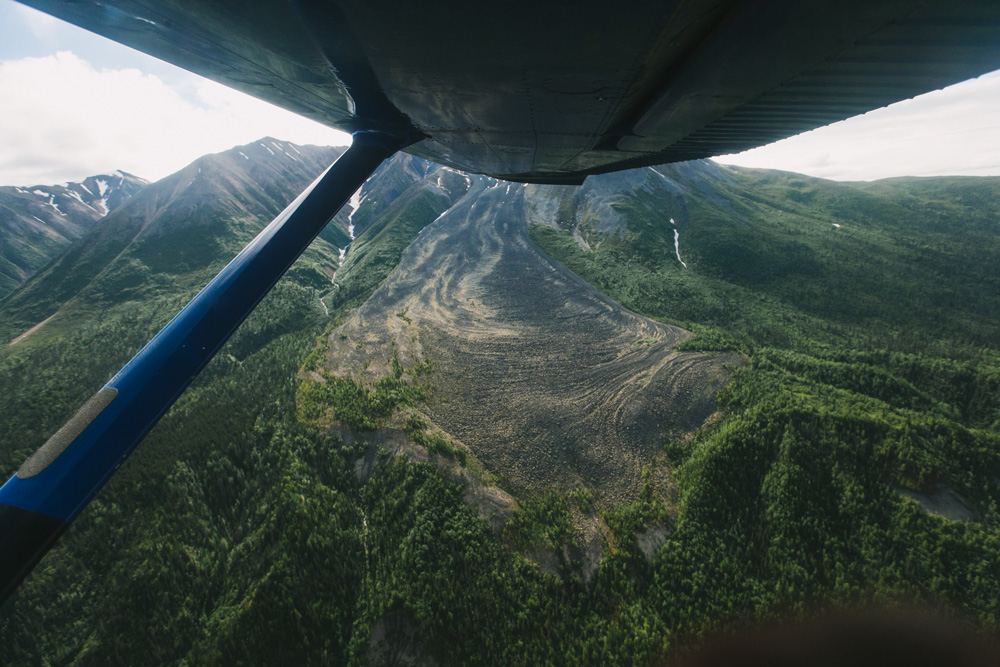
Photo by: Carson Brown
On our first day of river school, it was revealed to me that I had indeed hedged what packrafting is—especially Alaskan packrafting. River school with Jared, co-owner of Kennicott Wilderness Guides and Spencer, our Level 4 ACA Kayak Instructor, was not a formality. As I quickly found after flipping over and out of my Alpaca raft on a glorified ripple in the river, going deep into the Alaskan backcountry necessitates going deep into education and preparation—for several reasons. One: that water is cold. As Jared put it: “If it wasn’t moving, it would be frozen.” Two: as glaciers calve and snow melts and rain pours throughout the summer, water levels on the rivers in Wrangell St. Elias change rapidly. What was a meandering wave train on Tuesday has every chance to become charging white water by Thursday. Three: There are no trails out there in America’s largest and least-visited national park. Get lost? Good luck following the sun for directions, since it circles the sky and never sets, thanks to the 23-degree tilt of our planet and Alaska’s position on the 61st latitudinal line.
Fortunately, with a few crucial tips from Spencer and Jared: “Punch through the eddy line,” and “Speed, angle, and lean are your best friends,” I went from feeling like I was in over my head on the badass-scale to feeling like I was ready to explore this badass place—with respect to the grit and smarts an ever-flowing river and a trail-less wilderness deserves. By the time we were in a Cub bush plane with “Uncle” Bill, our pilot who had left Illinois at 18 and been exploring Alaska from the air six decades later, and landing on a patch of dirt adjacent to the Nizina Glacier, I realized that we weren’t only here to test the Torrent Pros, but to also test ourselves.
Luckily, we all held up to the task.
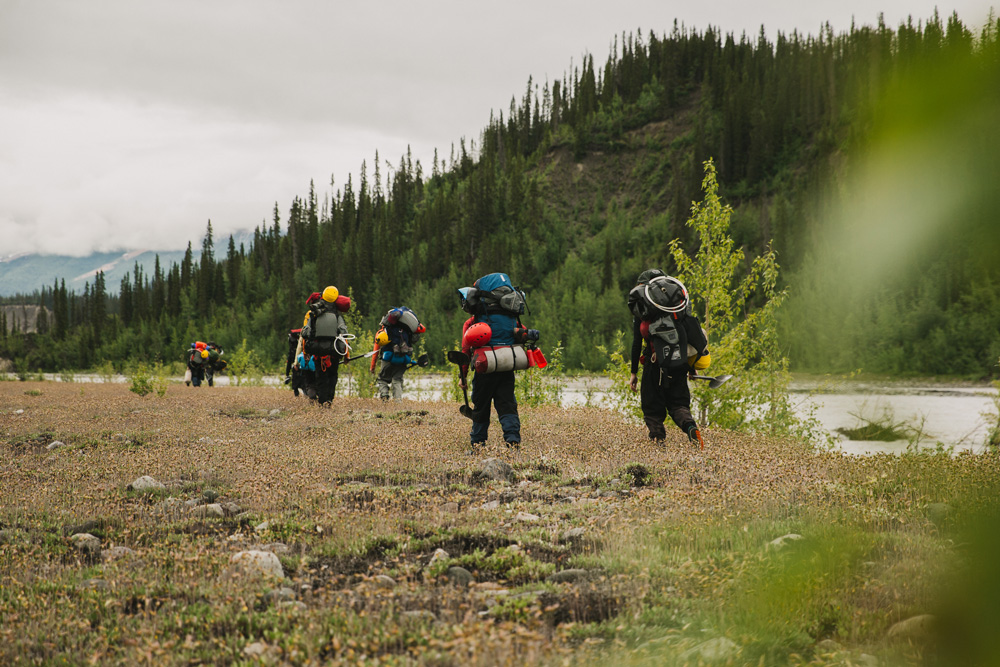
Photo by: Carson Brown
Over the course of the next 45 miles we hiked over moraines, back-flipped off of icebergs into glacial lakes, passed miso soup around the campfire to stay warm, paddled over boils and rockin’ wave trains, found six Grizzlies, watched the largest glacial calving event in the recorded history of the Nizina valley, ate salmon, picked up puzzle rocks, and made our way out of the bush in one piece plus a lot of extra goodness. I became an expert on burping my drysuit and cleaning the zipper of my Alpacka raft with a toothbrush to avoid air leaks. I buddy-carried boats across meadows filled with moose tracks and bear scat. I laughed until I cried and watched Spencer play the spoons like a pair of drumsticks while the moon rose and the sun didn’t set.
A lot changed from day one to day seven over the course of our backcountry-testing mission. But I never changed my shoes. The Torrent Pro, which is a full-foot water shoe designed to be able to double as a hiking shoe. It was developed in cahoots with the U.S. Men’s Rafting Team (and Coach John Mark Seelig) and it has some pretty unique features and capabilities that proved to be tough enough to handle Alaska. I was able to comfortably hike off-trail in them as well as spend three days in my bath toy boat paddling and fording the (near-freezing) river without having to switch shoes or pack multiple pairs.
It’s durability and versatility really comes down to the specs of the shoe. The Torrent Pro utilizes wet traction technology so you aren’t slipping and sliding on rocks and riverbeds, as well as a reinforced toe box and upper so you can hike in them without worrying about bashing your feet into boulders. The quick water-releasing capability of the knit construction was especially surprising—despite the full-foot coverage, I never felt like I was walking around in soggy shoes. Reinforced midsoles also keep your feet where they need to be—not slipping off the edges of the sole (like a knit lifestyle shoe would). The water shoe/hiking shoe hybrid proved not to be a gear compromise, but a multi-use tool allowing you to pack one pair of shoes on a rafting trip.
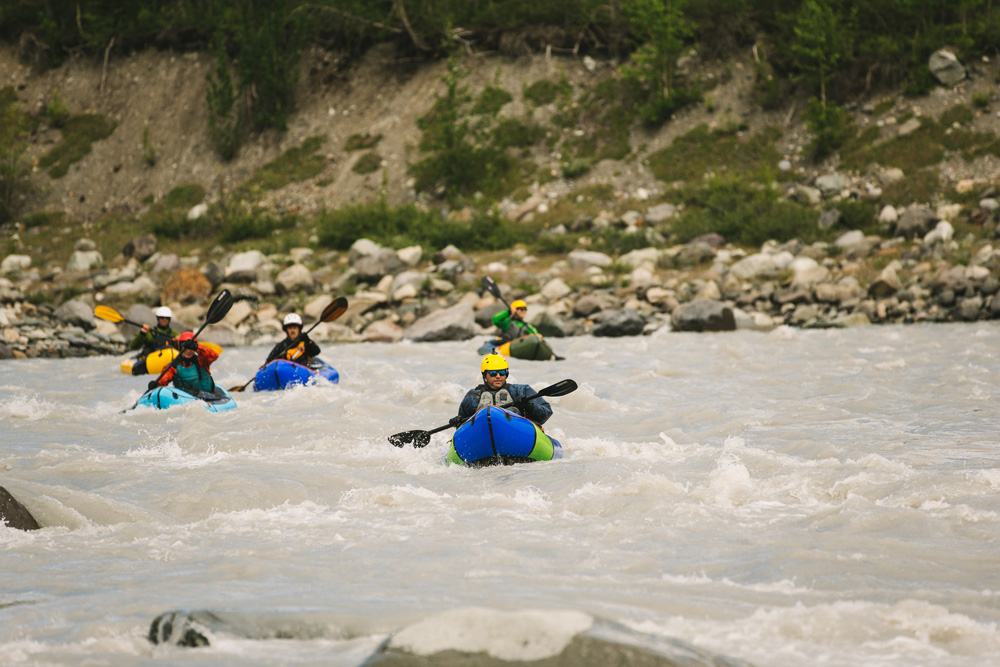
Photo by: Carson Brown
Having good gear allows you to forget about what you’re wearing and to focus on the one thing that matters: what you’re doing. And as we pulled our gear out of our bags in a heap of neoprene skullcaps and gloves and kayak skirts, I wasn’t thinking about what worked and what didn’t—I was thinking about when I could get out there and do exactly what I had just done all over again.
Packrafting, and the gear that allows you to do it, allowed me not to go to Alaska, but to get into Alaska. It allowed me to take my best shot at discovering a little corner of this big, wild place and I found a lot more than I reckoned I would: A dozen people who are counted as some of the best I’ve met, and a baker’s dozen of the craziest experiences Mama Nature has ever given me. I learned how to packraft—but I also learned that Alaska is brutal and beautiful. Pack accordingly.
Packrafting in Alaska? Here’s the gear you’ll need.
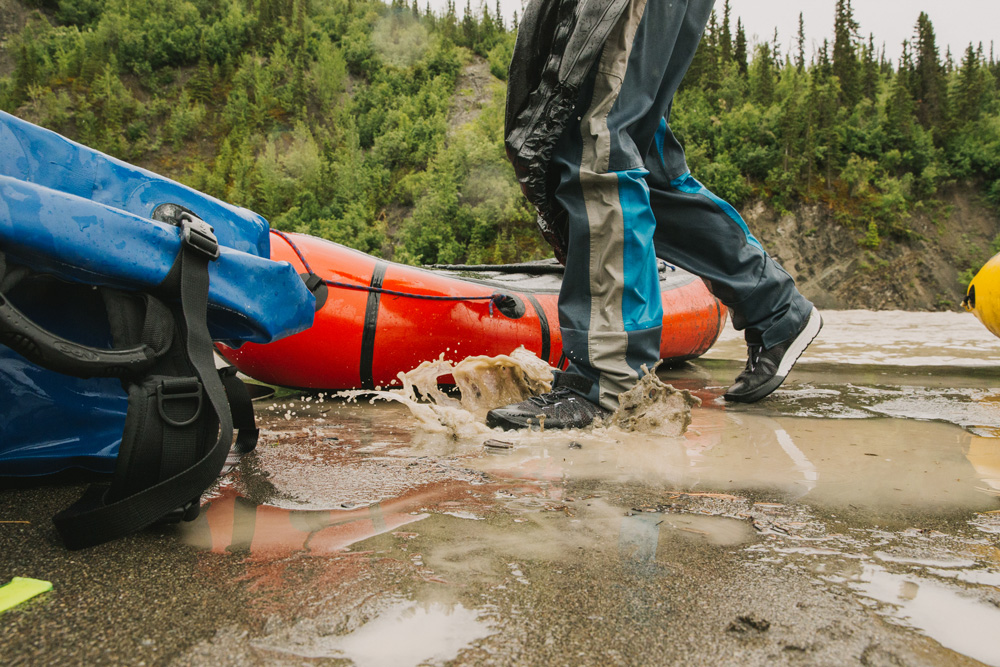
Photo by: Carson Brown
The gear our author used and recommends for an amphibious trip to the Last Frontier. (Alpacka Raft not included)
Kinesys SPF 30 EarthKind Performance Sunscreen
It may not be hot, but that Alaskan summer sun is persistent. Protect your skin with this full UVA/UVB spectrum protection sunscreen, and feel good about protecting the earth from all those nasty sunscreen chemicals.
$8, Buy It Here
Chaco Torrent Pro
Come by water or by land, the Torrent Pro can handle any packrafting job you throw at it. The wet-traction technology and hiking-shoe design, along with the quick-drain mesh fabric, does just as well on the river as it does on your hike out of the basin.
$130
Available February 1, 2019
The North Face One Bag
Alaskan summer weather isn’t the most predictable, and some nights were warm enough to sleep in a light 40-degree bag while the rainy, cold nights called for something with a little more insulation. But when you’re packrafting, there’s no room for bringing multiple bags. The solution is the One Bag from TNF. It’s a modular sleeping system that allows you to have three bags in one: rated at 40-degree, 20-degree, and 5-degrees.
$289, Buy It Here
Chums Slip Fit Rope Retainers
No one wants the disappointment of losing his or her retina-saving sunnies to the waters of the river. So, mitigate that risk by packing the lesser-thought-of-but-crucial pair of Chums.
$8, Buy It Here
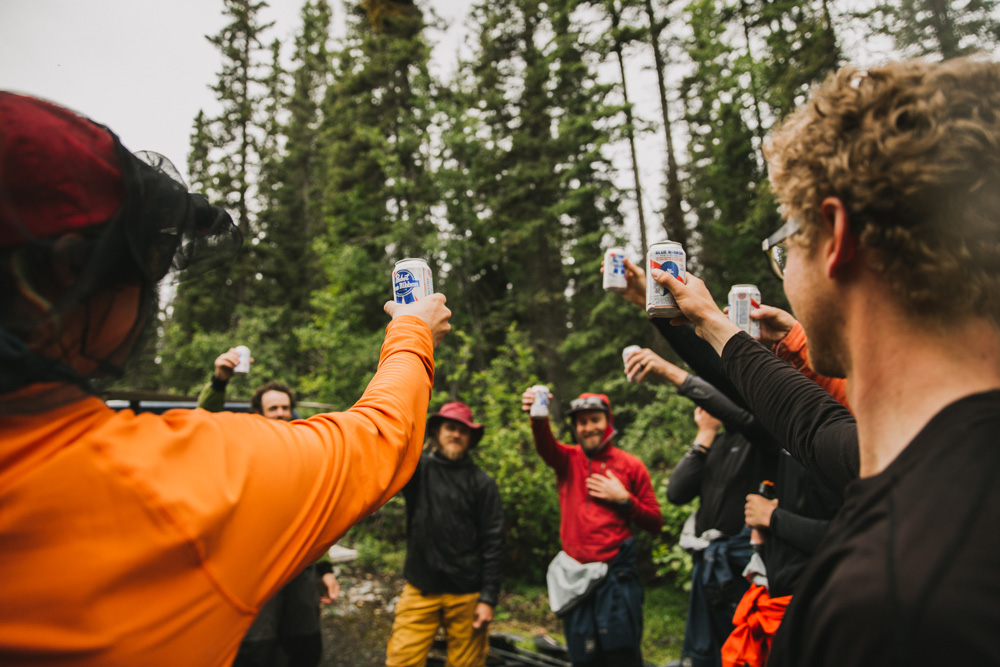
Photo by: Carson Brown


I enjoyed reading about your adventure s. i visitef Kennicott/McCarthy last summer for two0 glorious weeks and found my adventure to be life changing. I met amazing people and witnessed Mother Nature at her best. I was told by Spencer it would be a trip of a lifetime and it was. I hope to return summer of 2019. Thank you for sharing your descriotive journey. Angela, Spencer”s Mom